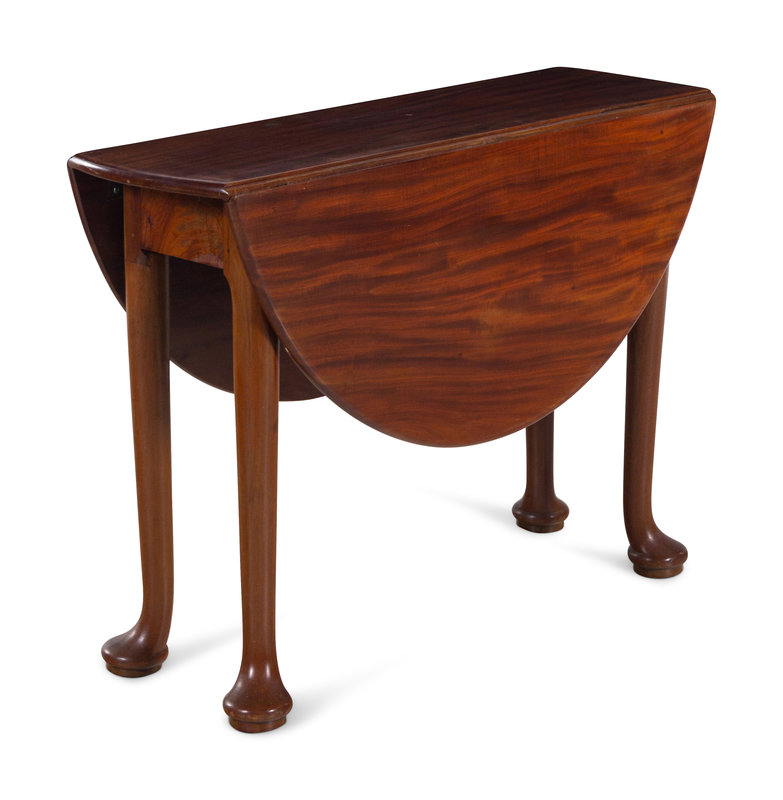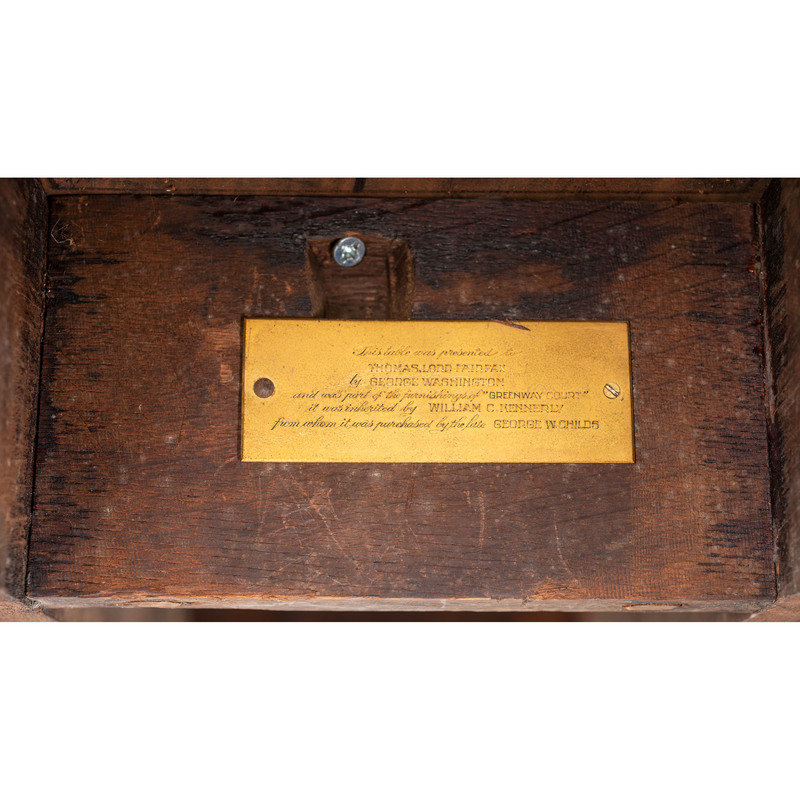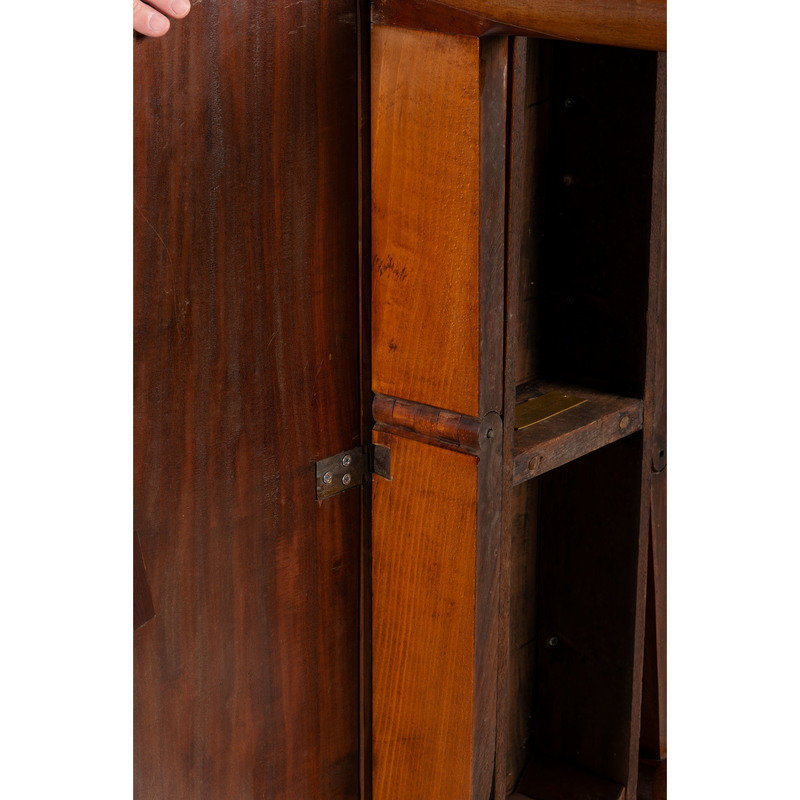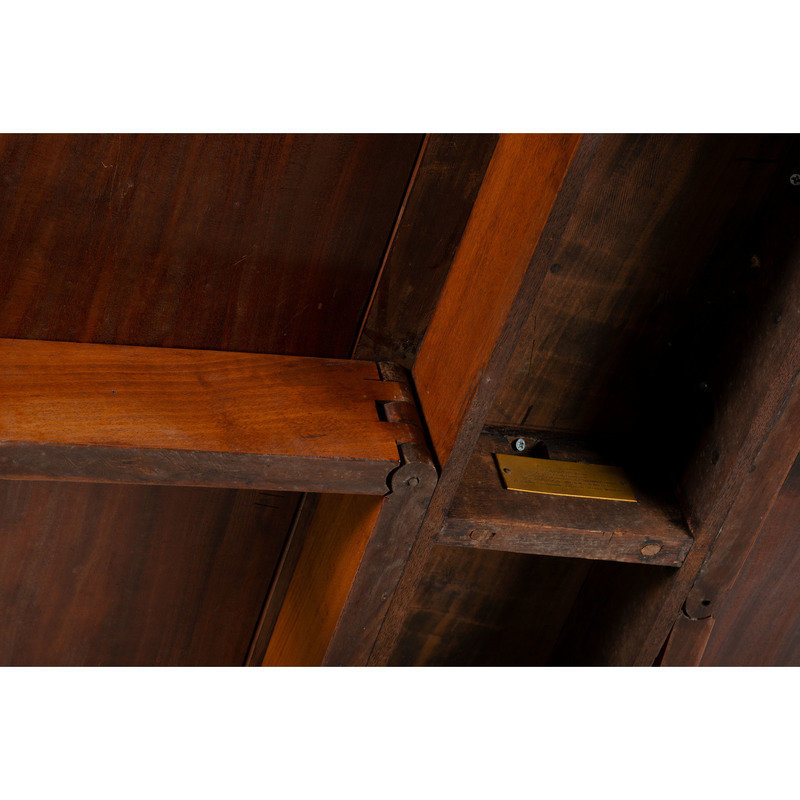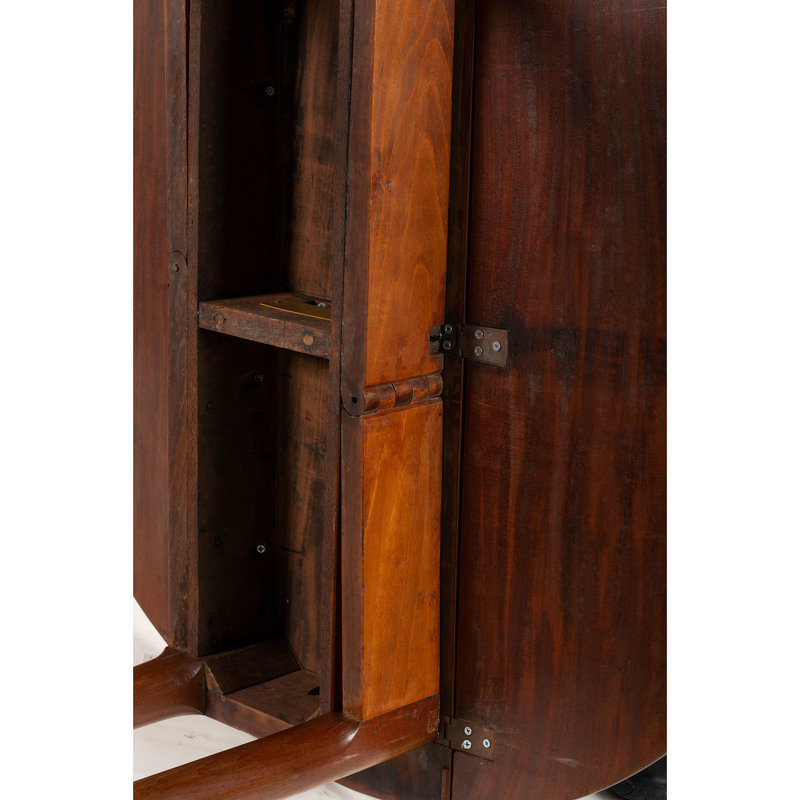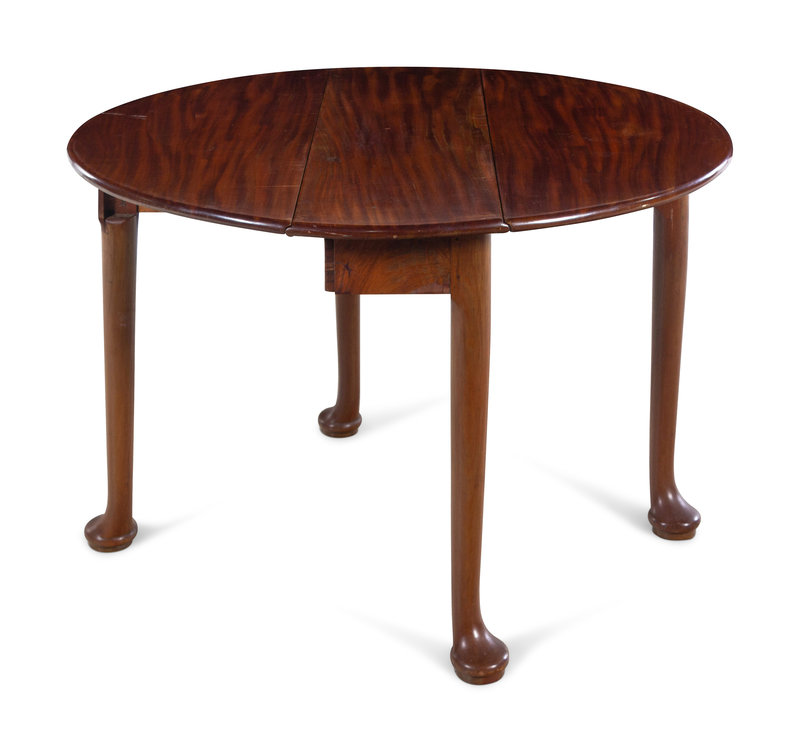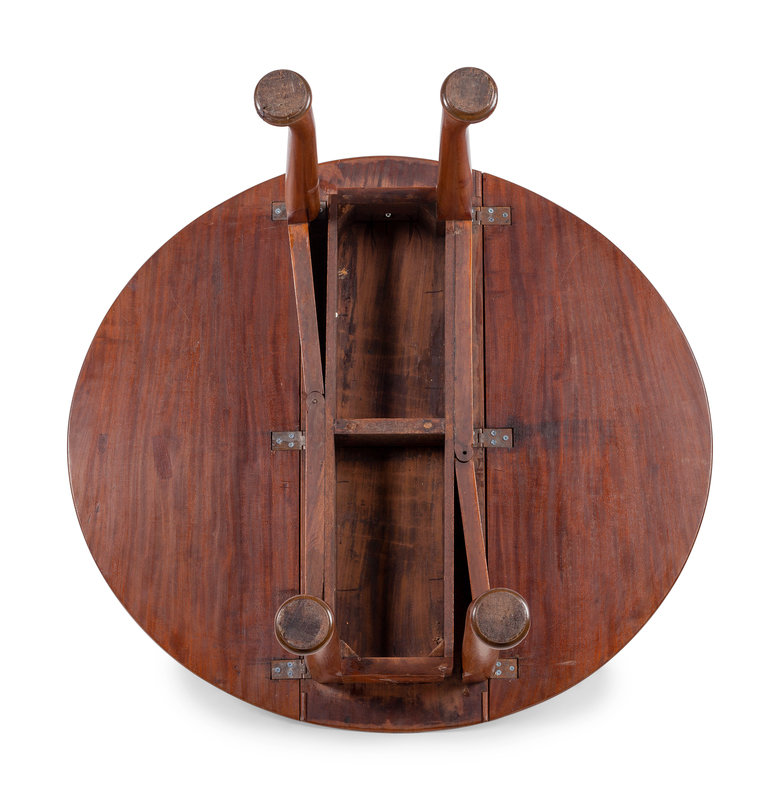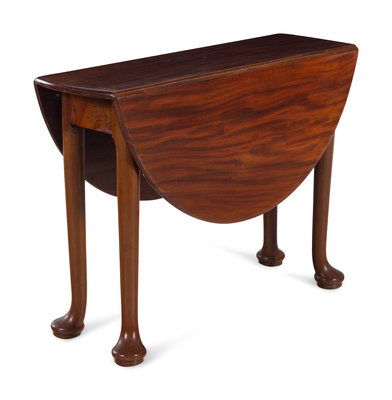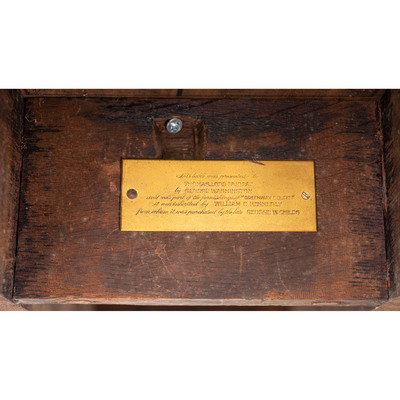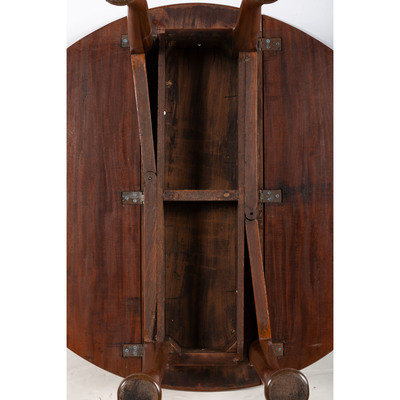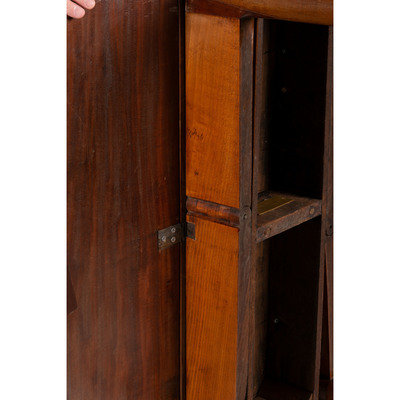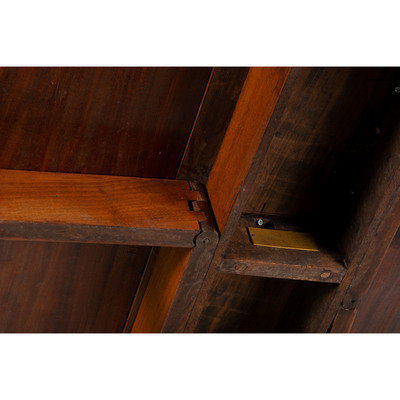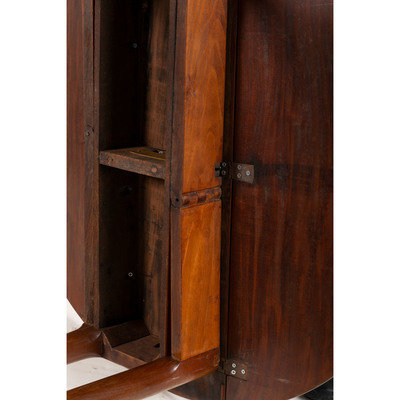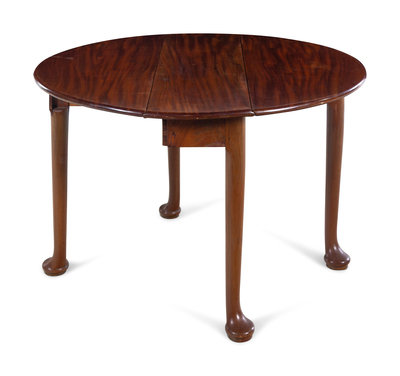Condition Report
Contact Information
Auction Specialist
Lot 284
The Washington-Fairfax George III Mahogany Drop Leaf Table
Sale 916 - American Furniture, Folk & Decorative Arts
Lots 1-410
Sep 30, 2021
6:00AM ET
Lots 411-816
Oct 1, 2021
6:00AM ET
Live / Cincinnati
Own a similar item?
Estimate
$2,000 -
4,000
Price Realized
$5,625
Sold prices are inclusive of Buyer’s Premium
Lot Description
The Washington-Fairfax George III Mahogany Drop Leaf Table
English, mid-18th Century
bearing a brass plaque to the underside: This Table was presented to Thomas Lord Fairfax by / George Washington, and was part of the furnishings / of Greenway Court. It was inherited by William C. Ken- / nerly, from whom it was purchased by the late George / W. Childs.
Height 28 x width 48 x depth 40 1/2 inches.
Height 28 x width 48 x depth 40 1/2 inches.
The current example was previously offered at Freeman’s in Philadelphia on November 20, 1928. At that time it was described as a “Mahogany English Table, Circular Top, with Drop Leaves, Shaped Legs, with Pad Feet. Diameter 44 inches.” And provided the provenance:
“This Table was presented to Thomas Lord Fairfax by / George Washington, and was part of the furnishings / of Greenway Court. It was inherited by William C. Ken- / nerly, from whom it was purchased by the late George / W. Childs.”
The same description appears on a brass plaque that has likely been on the table ever since that time. Although documentation of the table changing hands has not been found, the relationship between George Washington and the Fairfax family is well documented, and a fine piece of furniture being gifted from Washington to Lord Fairfax is well within the realm of possibility. If the plaque is to be believed, the table would have then passed from Thomas, Lord Fairfax to Thomas Bryan Martin.
Thomas, 6th Lord Fairfax (1693-1781) took possession of the Northern Neck Proprietary in 1719. He moved to Virginia himself in the mid 1730s. Among those who would help oversee his land was his cousin Colonel William Fairfax (1691-1757), his cousin’s son William (1724-1787), his nephew Thomas Bryan Martin (1731-1798), and a young George Washington. Lord Fairfax met Washington in 1748, and employed him as a land surveyor. He, along with other family members, remained close to Washington leading up to the Revolution. Although he was a Loyalist, he was not activist and was mainly left to live a quiet life at Greenway Court despite his sympathies.
Further cementing the familial connections, Lord Fairfax’s cousin William and his son George William lived at Belvoir plantation alongside Mt. Vernon. George’s half-brother Lawrence had married William Fairfax’s daughter Anne. Lawrence introduced George to the Fairfax family which was ultimately hugely beneficial to Washington’s career. William Fairfax made him the surveyor of Culpeper County despite the fact that he had not completed an apprenticeship. The Fairfax's were one of the most powerful families in Virginia, and had essentially become responsible for George Washington’s social and professional rise.
Thomas Bryan Martin was the nephew of Thomas, 6th Lord Fairfax. He came to Virginia in 1751 to assist his uncle in administering his large land holdings. Additionally he served in the Virginia House of Burgesses from 1758-1761 alongside George Washington. Following the American Revolution, Martin lived with his uncle at Greenway Court and inherited the property upon Lord Fairfax’s death in 1791.
Martin had replaced Lord Fairfax’s cousin’s son, George William Fairfax, as his land agent. Due to this, and Martin’s increasingly close relationship with his uncle, tension grew between Martin and William Fairfax. Fairfax and his wife left Virginia prior to the Revolution, returning to England, and would not return.
Martin lived at Greenway Court until his death in 1798. He had mistresses, but was unmarried and without a legitimate heir when he died. He bequeathed Greenway Court, including the house and household goods – presumably this table included – to his housekeeper, Betsy Powers. Following Martin’s death, Betsy Powers married William Carnegy and the two continued to live at Greenway Court. They had one daughter, Ann, who went on to marry Reverend Thomas Kennerly. Rev. Kennerly retired from ministry and moved to Greenway Court with Ann. The couple had six children, including a son William Carnegy Kennerly (1824-1909), presumably the William C. Kennerly referenced on the table’s plaque. William Carnegy, Betsy Powers, Ann and Thomas Kennerly are all buried on the land near Greenway Court, and Kennerly descendants are still living in the area.
The table was then apparently purchased by George W. Childs. While record of this has not been located, Childs’ 1923 estate catalog did include a dinner bell and stand from Greenway Court, listing that it also had been acquired from William Kennerly. The bell was sold at auction, along with the rest of Childs’ widow’s estate by Samuel T. Freeman & Co. Of Philadelphia on November 21, 1923.
